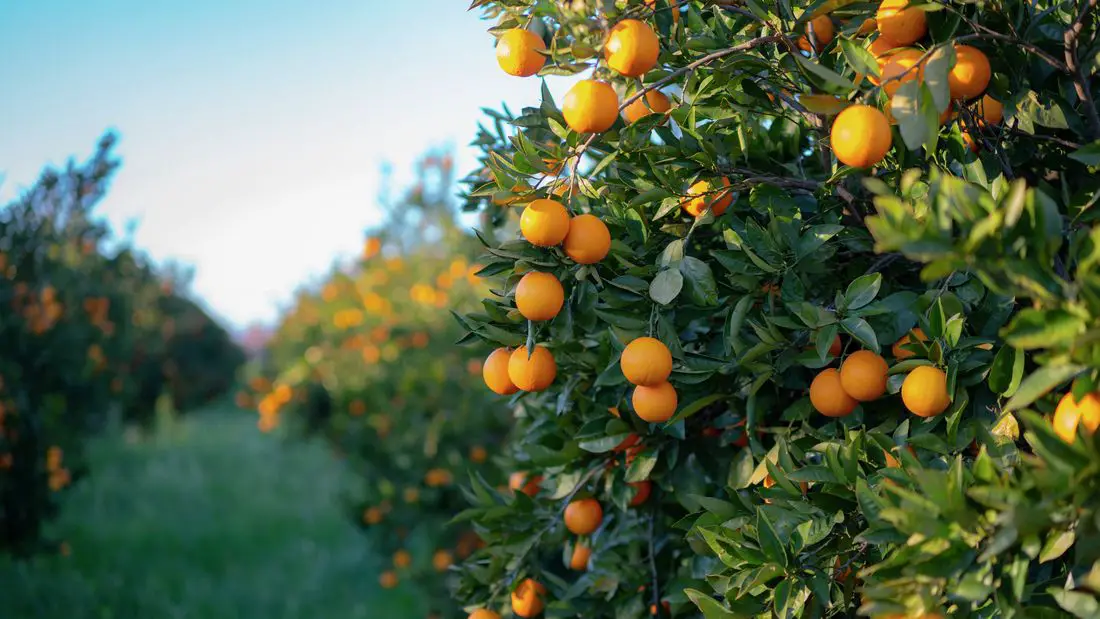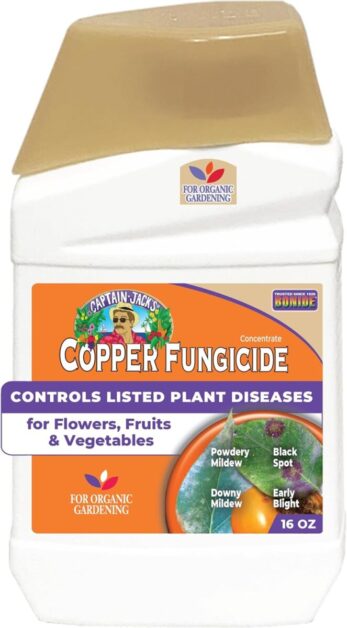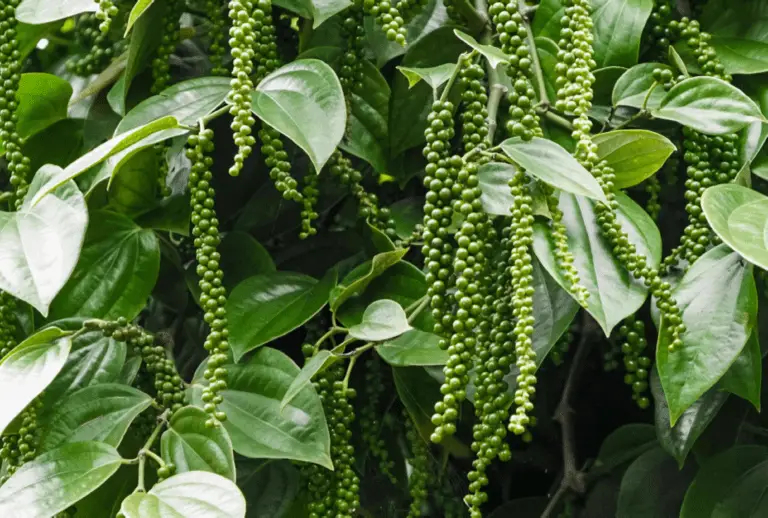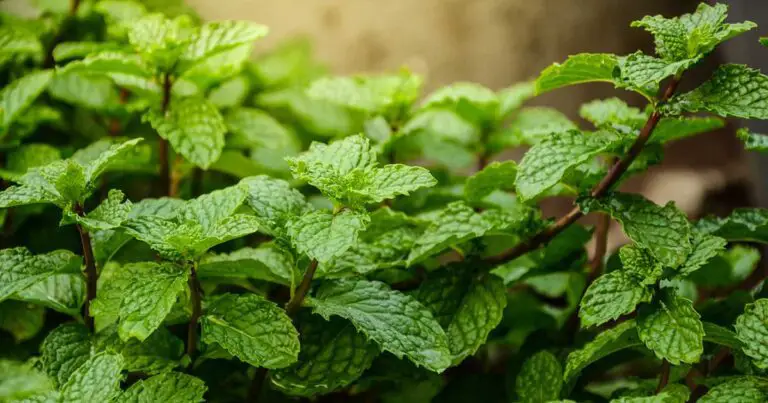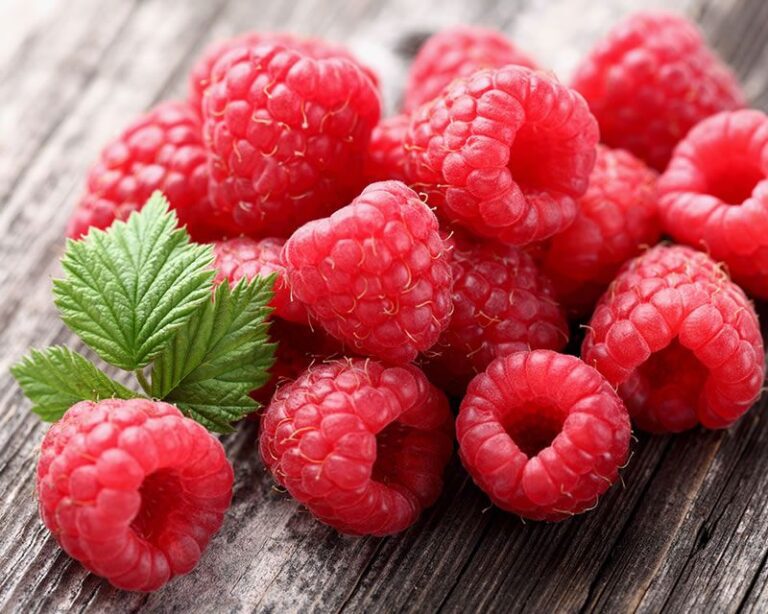Mandarin Tree Care: How to Grow and Enjoy These Citrus Fruits
Did you know that Mandarin trees are not only beautiful additions to your garden but also bear delicious citrus fruits? If you’re looking to cultivate these vibrant fruits in your backyard oasis, you’ve come to the right place! In this guide, we’ll dive into the art of Mandarin tree care, sharing expert tips on how to nurture these trees for a bountiful harvest. From planting and watering to pest control and pruning, we’ve got you covered every step of the way. Whether you’re a seasoned gardener or just starting out, you’ll find valuable insights to help you grow and enjoy these zesty delights. Get ready to transform your garden into a citrus paradise!
Table of Contents
The Benefits of Mandarin Trees in Your Garden
Mandarin trees are a delightful addition to any garden, offering a range of benefits that make them a popular choice for gardening enthusiasts.
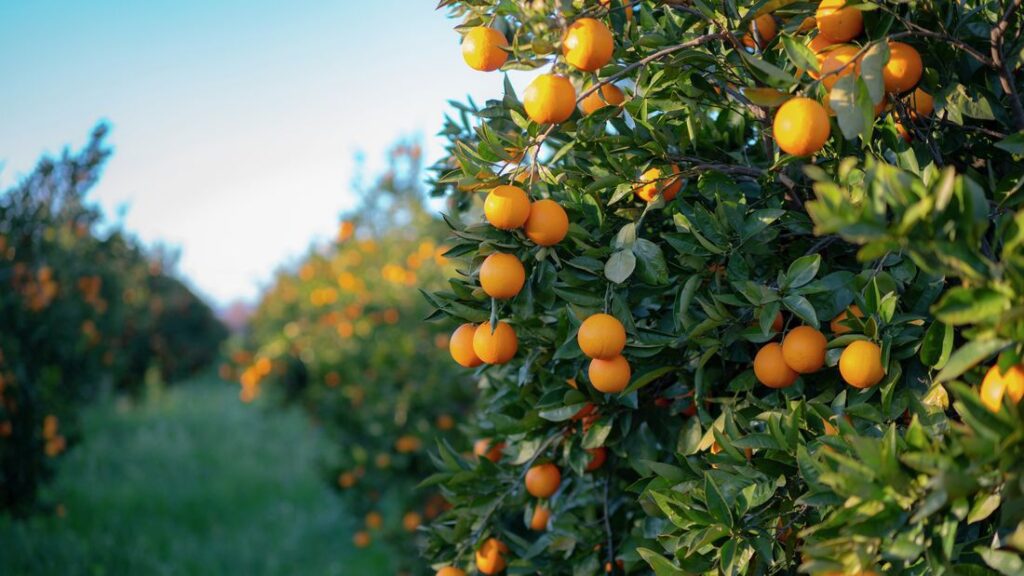
- Abundance of Fresh Fruits:
- Mandarin trees provide an abundance of fresh and flavorful fruits renowned for their sweet and tangy taste, perfect for refreshing snacks and versatile culinary creations.
- Aesthetic Benefits:
- Vibrant Appearance: With vibrant green foliage and colorful orange fruits, mandarin trees add a splash of color and vibrancy to any garden, enhancing its visual appeal.
- Enhanced Garden Aesthetics: The attractive appearance of mandarin trees improves the overall ambiance of the garden, creating a visually pleasing and inviting atmosphere.
- Natural Shade Providers:
- Cooling Effect: Mandarin trees act as natural shade providers, offering a cool and comfortable spot to relax during hot summer days, enhancing outdoor comfort and enjoyment.
Understanding the Ideal Growing Conditions for Mandarin Trees
Mandarin trees thrive in warm and tropical climates, making them an excellent addition to gardens in these regions.
- Temperature requirements:
- Sunlight requirements:
- Need at least six to eight hours of direct sunlight each day for healthy growth and optimal fruit production
- Planting in an area exposed to full sunlight provides the necessary energy for photosynthesis
- Soil requirements:
Remember, understanding and providing the ideal growing conditions for mandarin trees will help you cultivate healthy and productive trees in your garden. By ensuring proper temperature, sunlight, and soil conditions, you are setting the stage for success in your mandarin tree growth journey.
The following table shows about the ideal growing conditions for Mandarin trees:
| Growing Conditions for Mandarin Trees | Description |
| Sunlight | Full sun exposure for at least 8 hours daily. |
| Temperature | Thrives in warm climates; frost-sensitive. |
| Soil Type | Well-drained, sandy-loam soil with pH 6.0-7.5. |
| Watering | Regular watering, keeping soil consistently moist. |
| Humidity | Tolerates a range of humidity levels but prefers moderate humidity. |
| Wind Protection | Provide windbreaks in windy areas to prevent damage. |
Selecting the Right Mandarin Tree Variety for Your Region
When it comes to selecting the right mandarin tree variety for your region, it is important to consider several factors that can greatly impact the success of your garden.

- Climate Suitability:
- Mandarin trees thrive in warm, subtropical climates with mild winters and hot summers, requiring a minimum of 7-8 hours of direct sunlight daily for optimal growth and fruit production.
- Select a mandarin tree variety well-suited to the specific temperature and sunlight conditions of your region to ensure successful cultivation.
- Chilling Requirements:
- Chilling requirements vary among mandarin tree varieties, ranging from 100 to 500 hours of cold temperatures below a certain threshold to initiate flowering.
- Choose a mandarin tree variety with chilling requirements matching those of your region to ensure proper flowering and fruit set.
- Soil Conditions:
- Mandarin trees prefer well-draining soils with a pH level between 6.0 and 7.5 and are sensitive to salinity.
- Conduct a soil test to assess soil conditions and determine if any amendments are needed to create optimal growing conditions for mandarin trees.
By carefully considering the climate, chilling requirements, and soil conditions of your region, you can select the right mandarin tree variety that will thrive in your garden. Taking the time to research and choose the best variety will ensure a bountiful harvest of delicious mandarin fruits for years to come.
Choosing the Best Location for Planting Your Mandarin Tree
When it comes to planting a Mandarin tree, choosing the right location is essential for its growth and overall health.
- Sunlight exposure:
- Choose a spot that receives full sun exposure for ample fruit production
- Adequate sunlight is crucial for the tree’s growth and fruiting
- Spacing:
- Ensure proper air circulation and minimize disease risk by providing adequate spacing for branch spread and growth
- Allow room for the tree to expand its branches and canopy
- Soil quality:
- Mandarin trees prefer well-draining, slightly acidic soil
- Amend heavy or clay-like soil with organic matter to improve drainage and nutrient availability
By considering these factors and selecting a suitable location with full sun exposure, proper spacing, and well-draining soil, you can establish optimal conditions for Mandarin trees to thrive and flourish in your garden.
Preparing the Soil for Successful Mandarin Tree Growth
When it comes to preparing the soil for successful mandarin tree growth, there are a few key factors to consider.

- Optimal Soil Conditions:
- Mandarin trees thrive in well-draining soil rich in organic matter, facilitating proper root development and nutrient absorption.
- Soil Testing and pH Levels:
- Conduct a soil test to assess pH levels and nutrient deficiencies before planting mandarin trees. Aim for a slightly acidic pH range of 6 to 7.
- Organic Matter Addition:
- Incorporate compost or well-rotted manure into the soil to enhance fertility and structure, either before planting or by regularly applying mulch around the base of the tree.
- Mulching Benefits:
- Mulching improves soil moisture retention, suppresses weeds, and maintains consistent soil temperature around mandarin trees, promoting optimal growth.
- Nutrient Requirements:
- Supply essential nutrients such as nitrogen, phosphorus, potassium, iron, manganese, and zinc through organic or soluble fertilizers formulated for citrus trees to support growth and development.
- Proper Drainage:
- Ensure proper soil drainage to prevent waterlogged conditions and avoid root rot and diseases. Amend poorly draining soil with materials like sand or perlite to improve porosity.
By following these guidelines for preparing the soil, you will create an ideal growing environment for your mandarin tree, setting it up for successful growth and bountiful fruit production. With the proper soil conditions in place, your tree will be well-equipped to absorb essential nutrients, establish a strong root system, and thrive in your garden.
Review: Miracle-Gro Fruit & Citrus Fertilizer Spikes
Employing Miracle-Gro Fruit & Citrus Fertilizer Spikes to nourish my mandarin trees has been a game-changer in my orchard care routine. The spikes offer a straightforward solution for feeding, saving time and effort. Tailored specifically for citrus trees like mandarins, the spikes deliver a balanced blend of nutrients essential for vibrant growth and abundant fruiting. With their slow-release formula, my mandarin trees receive continuous nourishment for up to three months, promoting sustained health and productivity. While mindful of potential overfeeding risks and the non-organic nature of the product, the convenience and effectiveness of these spikes make them a staple in my mandarin tree care arsenal.
- Convenient Application: Easy-to-use spikes for hassle-free feeding.
- Balanced Nutrition: Provides essential nutrients tailored to the needs of fruit and citrus trees.
- Promotes Fruit Production: Encourages healthy growth and abundant fruiting.
- Long-Lasting: Slow-release formula feeds trees for up to 3 months.
- No Mixing Required: Eliminates the need for messy liquid fertilizers.
- Suitable for Potted Plants: Can be used for both in-ground and container-grown trees.
- Limited Coverage: May not be suitable for larger orchards or extensive citrus groves.
- Requires Regular Replacement: Spikes need to be replenished every few months for continuous feeding.
- Potential Overfeeding: Care must be taken not to apply too many spikes, risking over-fertilization.
- Not Organic: Contains synthetic chemicals, which may not be suitable for organic gardening practices.
- Costly for Large-Scale Use: Can be expensive for treating multiple trees over time.
- May Attract Pests: Excess fertilizer can attract pests like ants or rodents to the vicinity of the trees.
Proper Watering Techniques for Mandarin Trees
Proper watering techniques are crucial to the health and vitality of your Mandarin trees. As with any plant, water is an essential element for growth and development. However, it’s important to strike a balance and avoid both under-watering and overwatering.

- Mandarin trees require regular and consistent watering, especially during hot summer months
- Water deeply to ensure moisture reaches the root zone, encouraging deeper root growth for a stronger tree
- Aim to water early in the morning or late in the evening when temperatures are cooler
- Avoid midday watering when the sun is at its peak
By following these guidelines and providing consistent, deep watering at the optimal times, gardeners can ensure their Mandarin trees receive the necessary moisture for healthy growth and abundant fruit production.
Stay tuned for the next section where we will delve deeper into the essential nutrients and fertilizers required for optimal Mandarin tree health. Understanding how to nourish your trees properly will help you achieve a bountiful harvest of delicious and nutritious Mandarin fruits.
Essential Nutrients and Fertilizers for Mandarin Tree Health
Mandarin trees, like all plants, require essential nutrients and fertilizers to thrive and produce healthy fruits. Understanding the specific needs of mandarin trees can help you provide the necessary nourishment for their optimal growth.
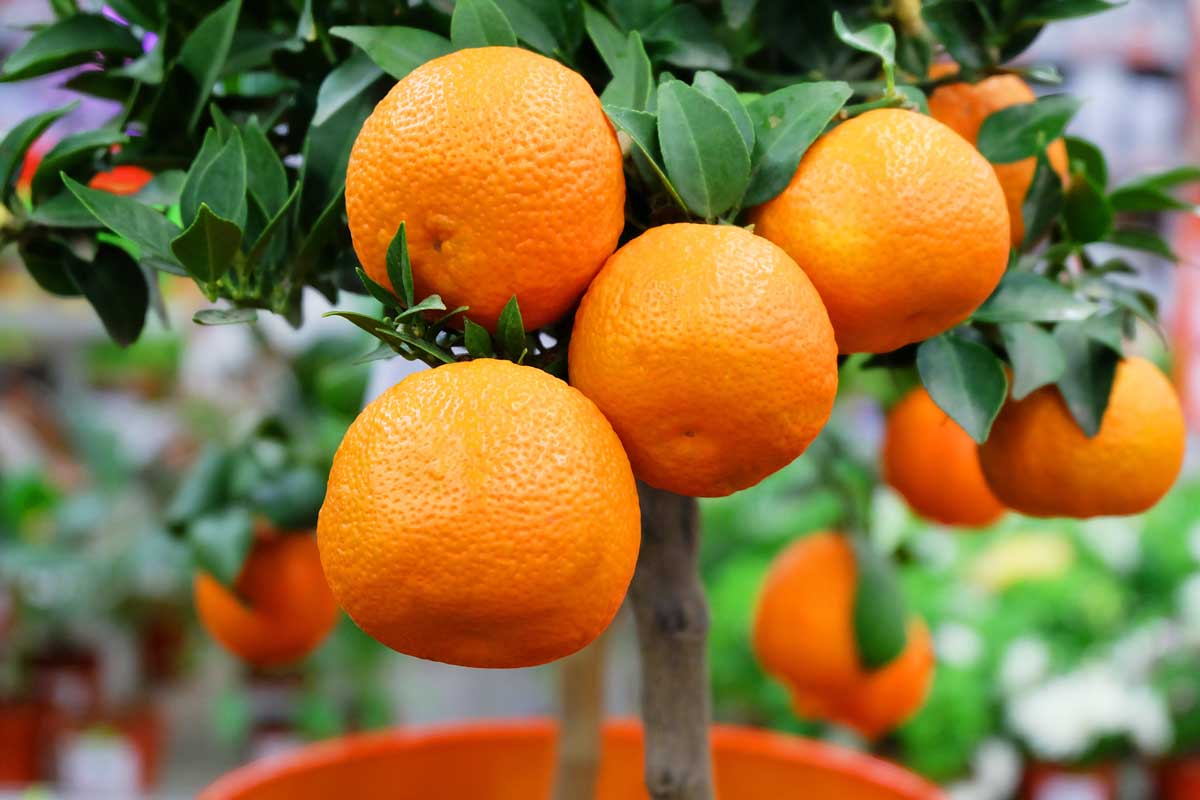
- Nitrogen Requirement:
- Nitrogen promotes leafy growth and overall plant health in mandarin trees. Fertilizers rich in nitrogen, such as ammonium sulfate or urea, are beneficial for providing this essential nutrient.
- Phosphorus and Potassium Benefits:
- Phosphorus supports root development and flower formation, while potassium enhances fruit quality and disease resistance. Balanced fertilizers containing these nutrients are crucial for mandarin tree health.
- Micronutrient Consideration:
- Micronutrients like iron, zinc, and manganese are essential for mandarin tree well-being. Iron, for example, aids in chlorophyll synthesis and prevents leaf yellowing. Many citrus tree fertilizers include these micronutrients.
- Proper Fertilization Practices:
- Carefully timing and applying fertilizers in appropriate amounts are crucial. Over-fertilization can lead to excessive vegetative growth and susceptibility to diseases and pests, while under-fertilization can result in stunted growth and poor fruit production.
- Expert Guidance:
- Consulting local horticulture experts or extension services can provide valuable insights into mandarin tree nutrient requirements based on regional soil conditions and climate. This ensures the optimal supply of essential nutrients for tree health and abundant fruit harvests.
The table explain about essential nutrients and fertilizers for Mandarin tree health:
| Nutrient/Fertilizer | Role in Mandarin Tree Health | Sources/Recommendations |
| Nitrogen (N) | Essential for leaf and stem growth. | Use balanced fertilizers with N, e.g., 10-10-10. |
| Phosphorus (P) | Promotes root development and flowering. | Choose fertilizers with higher P content. |
| Potassium (K) | Supports overall tree vigor and fruit development. | Include K-rich fertilizers; adjust based on soil tests. |
| Magnesium (Mg) | Vital for chlorophyll production and photosynthesis. | Apply Epsom salt or magnesium-containing fertilizers. |
| Calcium (Ca) | Strengthens cell walls and reduces fruit disorders. | Lime can be used to provide calcium if soil is acidic. |
| Micro Nutrients (Zn, Fe, Mn) | Trace elements crucial for enzyme activity and growth. | Use chelated micronutrient supplements as needed. |
| Organic Matter | Improves soil structure and nutrient retention. | Incorporate compost or well-rotted manure. |
| pH Adjustments | Maintain soil pH between 6.0 and 7.0 for nutrient availability. | Use lime for acidic soils; sulfur for alkaline soils. |
| Slow-Release Fertilizers | Provides gradual nutrient release for sustained feeding. | Consider incorporating slow-release fertilizers. |
Pruning and Shaping Your Mandarin Tree for Optimal Growth
Pruning and shaping your mandarin tree is essential for promoting optimal growth and maintaining its health and productivity. Proper pruning techniques not only help in controlling the size and shape of the tree but also improve its overall structure and fruit production.

- Remove dead or damaged branches to:
- Maintain an open and well-ventilated canopy to:
- Remove water sprouts and suckers to:
- Prune during the dormant period, typically late winter or early spring
Pruning and shaping your mandarin tree is a skill that, when executed correctly, can greatly benefit the overall growth and productivity of the tree. Following best practices and maintaining a regular pruning schedule will not only result in healthier trees but also ensure a bountiful harvest of delicious mandarins for years to come.
Protecting Mandarin Trees from Pests and Diseases
To ensure the health and vitality of your Mandarin trees, it is crucial to create a protective shield against pests and diseases. These pesky invaders can wreak havoc on your trees, causing stunted growth, wilting leaves, and even death if left unchecked. Prevention is key when it comes to protecting your Mandarin trees, and implementing a few simple practices can go a long way in safeguarding their well-being.
| Pest/Disease | Symptoms | Treatment | Effects on Plant |
|---|---|---|---|
| Citrus Leaf Miner | – Curling or distorted leaves | – Prune affected leaves | – Reduced photosynthesis |
| – Silvery trails on leaves | – Apply neem oil or insecticidal soap | – Stunted growth | |
| – Leaf drop | – Introduce natural predators (e.g., ladybugs) | – Reduced fruit production | |
| – Reduced fruit quality and yield | |||
| Citrus Canker | – Raised, corky lesions on leaves | – Prune affected branches | – Defoliation |
| – Yellow halo around lesions | – Apply copper-based fungicides | – Fruit drop | |
| – Premature fruit drop | – Burn infected debris | – Weakened tree structure | |
| – Practice good sanitation practices |
By following these proactive steps, you can significantly reduce the risk of pests and diseases damaging your Mandarin trees. Stay vigilant, maintain a clean garden environment, and intervene early when necessary to ensure the continued health and productivity of your beloved citrus trees.
Review: Bonide 811 Copper Fungicide
Utilizing Bonide 811 Copper Fungicide for my mandarin trees has been instrumental in combating fungal diseases and safeguarding their health. This product’s effectiveness in controlling a broad spectrum of fungal infections, including those commonly affecting citrus trees, has been impressive. As a preventative measure, it has significantly reduced the occurrence of diseases such as citrus canker and black spot, ensuring my mandarin trees remain robust and productive.
While mindful of potential staining and phytotoxicity risks, careful application has mitigated these concerns, allowing for safe and successful treatment. Overall, Bonide 811 Copper Fungicide has proven to be a reliable ally in my efforts to maintain the health and vitality of my mandarin trees.
✅ Preventative Action: Can be used both preventatively and as a curative measure against fungal infections.
✅ Broad-Spectrum: Works on many different types of plants, including fruits, vegetables, and ornamentals.
✅ Residual Activity: Offers residual protection after application, prolonging disease control.
✅ Safe for Organic Gardening: Suitable for use in organic gardening practices.
✅ Easy Application: Convenient liquid formulation for easy mixing and application.
❌ Phytotoxicity Risk: Overapplication or applying during hot weather can lead to phytotoxicity in sensitive plants.
❌ Limited Use Period: Best applied during specific times of the year to avoid damage to plants.
❌ May Require Repeat Applications: Some stubborn fungal infections may require multiple applications for complete control.
❌ Not Suitable for All Plants: Certain plants may be sensitive to copper-based fungicides, so always check compatibility.
❌ Potential Environmental Impact: Copper can accumulate in soil over time, potentially impacting soil health and microbial activity.
Harvesting and Storing Mandarin Fruits
When it comes to harvesting and storing mandarin fruits, timing is crucial to ensure the best flavor and quality. Mandarin trees typically produce fruit from late fall to early spring, depending on the variety and region.

By following these guidelines for determining ripeness, harvesting, and storing, mandarin growers can ensure a bountiful and flavorful harvest.
Delicious Mandarin Recipes to Enjoy
Mandarin oranges are not only delicious to eat on their own, but they also add a burst of flavor to a wide variety of recipes. From refreshing salads to mouthwatering desserts, the possibilities are endless when it comes to incorporating these juicy fruits into your culinary creations.

- Mandarin orange salad with mixed greens, goat cheese, and candied pecans:
- Mandarin orange sorbet:
Whether you prefer savory or sweet dishes, incorporating Mandarin oranges into your recipes can take your culinary skills to the next level. So why not explore the world of Mandarin-inspired cuisine and discover the delightful flavors that these citrus gems have to offer?
Here are a few delicious mandarin orange recipes to enjoy:
Mandarin Orange Salad
Ingredients:
- Mixed greens
- Mandarin orange segments
- Crumbled goat cheese
- Candied pecans
- Light citrus vinaigrette
Instructions:
- Arrange mixed greens on a plate.
- Top with mandarin orange segments, goat cheese, and candied pecans.
- Drizzle with a light citrus vinaigrette.
- Serve chilled.
Mandarin Orange Sorbet
Ingredients:
- 1 cup freshly squeezed mandarin orange juice
- 1/2 cup sugar
- 1 tablespoon lemon juice
Instructions:
- In a saucepan, combine mandarin orange juice and sugar. Heat until sugar dissolves.
- Remove from heat and stir in lemon juice.
- Pour mixture into a shallow baking dish and freeze for 2 hours, stirring every 30 minutes.
- Transfer to a food processor and blend until smooth.
- Return to the baking dish and freeze until firm, about 2 more hours.
- Scoop and serve immediately.
Mandarin Orange Smoothie
Ingredients:
- 1 cup mandarin orange segments
- 1 banana
- 1 cup plain yogurt
- 1/2 cup milk
- 1 tablespoon honey (optional)
Instructions:
- In a blender, combine mandarin orange segments, banana, yogurt, milk, and honey (if using).
- Blend until smooth and creamy.
- Pour into glasses and serve immediately.
These recipes showcase the bright, sweet flavor of mandarin oranges in a variety of ways, from a refreshing salad to a creamy sorbet and a nutritious smoothie. Enjoy these delicious treats and savor the taste of this citrus fruit.
Sharing Mandarin Fruits with Friends and Family
Sharing Mandarin Fruits with friends and family is not only a delightful way to enjoy the fruits of your labor, but also a meaningful way to spread the joy of mandarins.

- Juicy Burst of Flavor: Mandarin fruits are not only vibrant and juicy but also bursting with flavor, making them an irresistible snack or a delightful addition to any culinary dish.
- Perfect Gift Idea: Whether arranged in a beautifully crafted basket or freshly squeezed into a glass of juice, mandarins make for an appreciated gift that showcases their sweetness and tanginess.
- Citrus-Themed Gathering: Host a citrus-themed gathering and set up a display table featuring a variety of mandarins. Provide information about each type to encourage guests to sample and compare flavors and textures, fostering an interactive and engaging experience.
- Promoting Awareness: Through tasting sessions, guests can learn about the diversity of mandarins, gaining insight into their unique characteristics and flavor profiles.
- Inspiring Culinary Creativity: Share recipes and tips for incorporating mandarins into various dishes, sparking inspiration among friends and family to experiment with these delightful fruits in their own cooking endeavors.
Troubleshooting Common Issues with Mandarin Trees
Mandarin trees, like any other plant, can sometimes encounter problems that hinder their growth and fruit production.
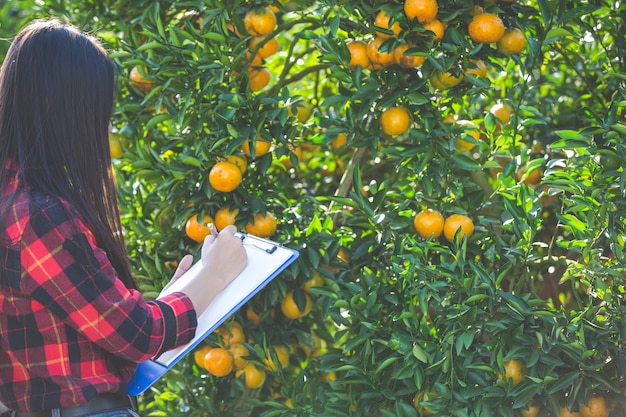
- Poor drainage leading to root rot and fungal diseases:
- Nutrient deficiencies causing yellowing leaves or stunted growth:
- Lack of essential minerals like nitrogen, phosphorus, or potassium
- Regularly fertilize with a balanced citrus fertilizer according to instructions
- Conduct a soil test to identify specific deficiencies and apply appropriate amendments
- Follow recommended dosage to avoid over-fertilization, which can damage roots
- Other potential issues:
By addressing these common issues promptly, you can ensure the health and vitality of your mandarin trees and maximize their fruit production. Stay tuned for more expert tips on long-term Mandarin tree care to continue maintaining a thriving and abundant garden.
Expert Tips for Long-term Mandarin Tree Care
1. Regular Pruning and Shaping:
Maintaining proper pruning and shaping techniques is crucial for the long-term care of your mandarin trees. Pruning helps promote airflow and sunlight penetration, reducing the risk of disease and allowing the tree to produce healthy and abundant fruits. Start by removing any dead, damaged, or diseased branches, making clean cuts just outside the branch collar. Additionally, you should also thin out crowded areas to enhance the tree’s overall structure.
Remember to shape the tree as desired, keeping in mind the importance of maintaining a balanced canopy for optimal growth and fruit production.
2. Mulching for Moisture Retention:
Applying a layer of mulch around the base of your mandarin tree can provide several benefits for its long-term care. Mulching helps retain moisture in the soil, preventing water loss through evaporation and reducing the frequency of watering. It also acts as insulation, protecting the tree’s roots from extreme temperature fluctuations. Choose organic mulch, such as wood chips or compost, and spread it evenly around the tree, keeping it a few inches away from the trunk. Regularly replenish the mulch layer to maintain its effectiveness and prevent weed growth.
This simple practice can significantly contribute to the health and vigor of your mandarin tree.
For more information watch the video:
FAQ
How long does it take for a mandarin tree to bear fruit?
The time it takes for a mandarin tree to bear fruit can vary depending on several factors, such as the variety of mandarin tree and the growing conditions. Generally, you can expect a mandarin tree to start producing fruit within 2 to 4 years after planting.
Do mandarin trees require a lot of sunlight?
Yes, mandarin trees thrive in full sunlight. They require at least 6 to 8 hours of direct sunlight each day to ensure optimal growth and fruit production.
Can I grow a mandarin tree in a container or pot?
Yes, it is possible to grow a mandarin tree in a container or pot. However, it is important to choose a dwarf or semi-dwarf variety that is suitable for container gardening. Additionally, you will need to ensure that the container has proper drainage and provide regular watering and fertilization.
How often should I water my mandarin tree?
The frequency of watering your mandarin tree will depend on various factors such as the climate, soil drainage, and tree size. Generally, it is recommended to water deeply once or twice a week during the growing season, allowing the soil to dry out slightly between waterings. However, it is important to adjust the watering schedule based on the specific needs of your tree.
Are there any specific pests or diseases that commonly affect mandarin trees?
Yes, mandarin trees can be susceptible to pests such as citrus leafminer, aphids, and citrus fruit fly. They can also be affected by diseases such as citrus canker and citrus greening. It is important to monitor your tree regularly, implement proper pest control measures, and practice good orchard hygiene to prevent and manage these issues.
How do I know when mandarins are ripe and ready to harvest?
Mandarin fruits are typically ready to harvest when they turn a bright orange color and are easily detached from the tree with a gentle twist or pull. Ripe mandarins should also have a fragrant smell and feel firm yet slightly soft to the touch.
How should I store harvested mandarins to maintain their freshness?
To maintain the freshness of harvested mandarins, it is best to store them in a cool, well-ventilated area away from direct sunlight. They can be stored at room temperature for a few days or in the refrigerator for up to two weeks. However, it is recommended to consume them as soon as possible after harvest for the best flavor and quality.
Can I propagate a mandarin tree from seeds?
While it is possible to propagate a mandarin tree from seeds, it is not the most reliable method. Mandarin trees grown from seeds may not necessarily produce fruits that are true to the parent tree, as they can exhibit variations in characteristics. It is generally recommended to propagate mandarin trees through grafting or budding techniques to ensure consistency and quality.
How often should I fertilize my mandarin tree?
Mandarin trees benefit from regular fertilization to ensure proper growth and fruit production. It is recommended to fertilize your tree three times a year – in early spring, early summer, and early fall. Use a balanced fertilizer specifically formulated for citrus trees and follow the instructions on the label for application rates.
Can I use organic methods to control pests and diseases on my mandarin tree?
Yes, organic methods can be used to control pests and diseases on mandarin trees. Some examples include using beneficial insects, such as ladybugs and lacewings, to control aphids, and spraying neem oil or insecticidal soap to manage certain pests. For diseases, practicing good orchard hygiene, such as removing fallen leaves and fruits, can help prevent the spread of diseases. Organic fungicides can also be used if necessary, following the instructions provided.

Studied Agricultural Engineering-Plant Protection at University of California, Davis.
Head of Content writing team at Southelmontehydroponics.com

